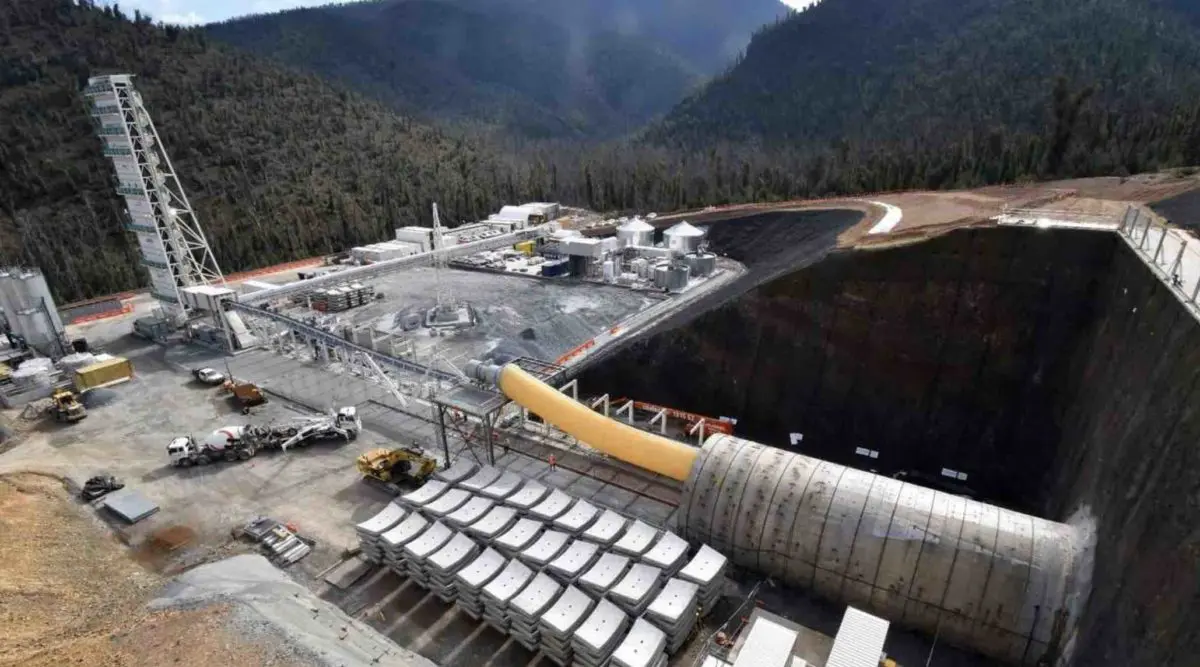One of the two major contractors for the $5 billion plus Snowy 2.0 pumped hydro project says it has no working capital facility – a situation it describes itself as “ludicrous” – but denies an ongoing dispute with the project owner Snowy Hydro.
The South Africa-based Murray & Roberts, which owns Clough Engineering – a 35 per cent partner in the consortium building the massive project – revealed the status of its working capital situation in a briefing to investors overnight.
It blamed the liquidity problems on the cost of new equipment, such as the massive tunnel boring machines digging into the national park’s mountains and other costs now subject to “contingent revenue” claims.
The same company, however, is also building for Transgrid the NSW part of the $1.5 billion Project EnergyConnect transmission link between South Australia and NSW, and the Tallawarra B gas fired power station for EnergyAustralia, the first in the country to be “hydrogen capable.”
“Can you believe it, it’s got zero working capital facilities. It’s ludicrous for Clough not to have anything in place,” Murray and Robert group finance director Daniël Grobler told analysts.
Among the options being considered for the company are new bank facilities – and it says it is seeking up to $50 million in capital from two different sources – or even an equity issue.

The revelations come amid increasing concern over the status of the Snowy 2.0 project, the taxpayer funded investment that has already garnered controversy over its economic and market benefits and its economic impact.
Reports have emerged that the project is running more than $2 billion over its already inflated budget of $5.1 billion (not including transmission), delays of up to 18 months that have still not been communicated to the market operator, and the sudden resignation last week of CEO Paul Broad.
The situation around the timing of the project is quite extraordinary. The delays have been announced by Clough and federal energy minister Chris Bowen, effectively the company owner, but not by Snowy Hydro itself, which continues to insist to AEMO, the market operator, that it is running on time.
Reports have also emerged that Clough is in dispute with Snowy over the timing and scale of payments, and a recent audit report pointed to the differences in claims to Snowy Hydro from its contractors, and payments made.
Murray & Roberts revealed in its latest annual accounts that it has some 2.7 billion rand in “uncertified revenue”, which represents claims that have not yet been OK’d by its clients. But it did not break down the source of these revenues, other to say it comes in the division managing the Snowy and Transgrid contracts.
Its net cash position has been reduced to 730 million rand as at June 30, down from 2.26 billion rand a year earlier.
The Transgrid contract is also suffering delays, with AEMO this week revealing it is running up to 12 months behind, a situation it says could present challenges for grid reliability in coming years.
Clough CEO Peter Bennett downplayed the differences between Clough and Snowy Hydro.
“Despite what you might read in the press, we’re not in dispute with the client here,” he told the analyst briefing.
“What we do have is a pretty collaborative approach to look at how do we mitigate those impacts, both in terms of time and cost, as we look to the next few years of project execution. So we’re working very collaboratively collaboratively with that client.”
In a briefing in June, where Bennett first talked publicly of the 18-month project delay, he spoke of the difficulty of finding enough trained people to operate the giant tunnel boring machines. He says that situation has now been resolved and all three machines are now in operation.
“This project has also enjoyed everything from bushfires through the pandemic to get to where it is today,” he said.
“But what I’m pleased to report is that as of today, the project has all three of its tunnel boring machines in operation.
“The precast segment factory is operating at full capacity, building all the elements to line the tunnels and also we’re about to start work on the excavation of the main underground powerhouse.
“So really the the field execution phase of this project is in full swing at the moment, a lot of the preparatory works and support works associated with building the construction camps or the surface facilities are behind us.”
Note: This story has been updated to note that Clough has zero working capital facilities, rather than zero working capital.










